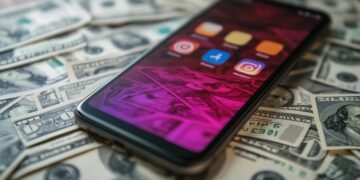The shadow of the Great Depression continues to influence how Americans think about protecting their wealth. In the decades since that devastating economic collapse, we’ve witnessed numerous recessions, global financial crises, dramatic market crashes, and significant housing market downturns. These experiences have taught us that simply hoping for the best isn’t enough to safeguard our financial future. Today, protecting your money requires something more substantial than wishful thinking—it demands a well-thought-out strategy and consistent action.
Managing your finances successfully involves combining education, discipline, and the ability to anticipate future challenges. It’s about understanding the fundamentals of budgeting, making smart investment decisions, and developing habits that support long-term financial health. The path to financial security includes several key components: establishing an emergency fund that can carry you through unexpected hardships, creating a diversified investment portfolio that doesn’t put all your eggs in one basket, and maintaining the discipline to live within your financial means. When you take these proactive measures, you’re better equipped to handle whatever economic uncertainties come your way with confidence rather than panic.
Robert Kiyosaki, the renowned author and financial educator, has dedicated his career to helping people understand how to achieve financial success and avoid economic catastrophe. His insights have helped millions of people transform their relationship with money and build more secure financial futures. The strategies he recommends aren’t quick fixes or get-rich-quick schemes—they’re fundamental principles that, when applied consistently, can help you navigate the complex financial landscape of modern life.
Invest in Your Financial Education First
Kiyosaki places tremendous emphasis on financial literacy, arguing that you are fundamentally your best investment. When you dedicate time and effort to improving your understanding of how money works, you dramatically reduce your vulnerability in various financial systems. This education removes you from the high-risk category that characterizes people who make financial decisions based on guesswork or emotional reactions.
Understanding the core concepts of personal finance is foundational to achieving true financial independence. This means grasping how money functions in our economy, recognizing the crucial difference between assets and liabilities, and learning the basics of different investment strategies. Without this knowledge, you’re essentially navigating in the dark, vulnerable to making costly mistakes or missing valuable opportunities.
Kiyosaki specifically recommends investing your time and resources into learning about the stock market and how it operates. Understanding market cycles, company valuations, and investment strategies can help you make informed decisions rather than following the crowd or reacting emotionally to market volatility. He also advocates for education in real estate investing, which has historically been one of the most reliable paths to wealth building for ordinary Americans.
Beyond these specific areas, Kiyosaki encourages people to understand how financial institutions work—how banks make money, how interest rates affect different aspects of the economy, and how various financial products function. This knowledge transforms your perspective, allowing you to see opportunities where less informed people only see obstacles or threats.
Consider the housing market as an example. If you’ve taken the time to learn about real estate investing and understand the dynamics of your local housing market, you’re far better positioned to navigate challenges like subprime mortgages or unrealistic pricing. You can recognize when prices are inflated, understand the risks of different mortgage products, and identify opportunities that others might miss because they lack this foundational knowledge.
Build Multiple Streams of Passive Income
One of the central pillars of Kiyosaki’s financial philosophy involves creating passive income streams. Passive income refers to money you earn with minimal ongoing effort—income that continues flowing in whether you’re actively working or not. This concept represents a fundamental shift from the traditional model of trading time for money through a single job.
Passive income can come from various sources. Rental properties generate monthly income from tenants while potentially appreciating in value over time. Dividend-paying stocks provide regular payments just for holding the investment. Royalties from creative work, intellectual property, or business ventures can continue generating income long after the initial work is completed. Businesses that don’t require your daily involvement—perhaps because you’ve hired management or automated operations—can also serve as passive income sources.
Kiyosaki argues that building these income streams is absolutely essential to achieving genuine financial freedom. When you rely solely on a paycheck from active employment, you’re trapped in a cycle where you must continue working to maintain your lifestyle. Financial emergencies, job loss, or the desire to retire can become sources of severe stress because your income stops when you stop working.
In contrast, passive income allows you to focus on wealth accumulation rather than simply surviving paycheck to paycheck. It creates options and flexibility in your life. With sufficient passive income, you can choose to pursue work you’re passionate about rather than whatever pays the most. You can weather economic downturns with less anxiety. You can retire when you’re ready rather than when you hit a certain age.
Kiyosaki often encourages people to develop side ventures that can eventually become passive income sources. This might mean starting small with a single rental property, investing consistently in dividend-paying stocks, or building a business that can eventually run without your constant involvement.
Practice Financial Prudence by Living Below Your Means
Living beneath your means is frequently misunderstood as a call for self-deprivation or an unnecessarily spartan lifestyle. However, Kiyosaki frames this principle differently—it’s about financial prudence and making strategic choices about how you allocate your resources.
One of the most dangerous patterns Kiyosaki warns against is lifestyle inflation. This phenomenon occurs when people increase their spending as their income grows, constantly upgrading their lifestyle to match their rising earnings. Someone gets a raise and immediately moves to a more expensive apartment, buys a luxury car, or adopts pricier habits. The result is that despite earning more money, they’re no better off financially than before—they simply have more expensive obligations.
Kiyosaki advocates for a disciplined approach to both spending and saving. This doesn’t mean denying yourself everything enjoyable or never spending on things you value. Rather, it means being intentional about your spending decisions and always prioritizing your long-term financial security alongside your immediate desires.
The practical benefit of this approach becomes especially clear during economic crises. If another global financial crisis occurs—and history suggests it’s a matter of when, not if—the money you didn’t spend on unnecessary purchases becomes a crucial cushion. This financial buffer can help you weather job loss, unexpected expenses, or market downturns without falling into devastating debt.
By consciously avoiding unnecessary debt and making savings and investment your priorities, you create financial resilience. This buffer protects you against emergencies that would derail people living paycheck to paycheck. It also positions you to take advantage of investment opportunities that often appear during economic downturns, when others are forced to sell assets at discounted prices.
Kiyosaki reminds us that no banking system is truly infallible. We’ve seen banks fail, financial instruments collapse, and supposedly secure investments evaporate. Taking preventative measures and maintaining a conservative approach to spending isn’t pessimism—it’s realistic preparation for an uncertain future.
Understand the Critical Distinction Between Assets and Liabilities
Kiyosaki offers a straightforward definition that cuts through financial complexity: an asset is something that puts money in your pocket, while a liability takes money out. This simple framework can transform how you think about financial decisions.
Many people mistakenly classify certain purchases as assets when they’re actually liabilities. An expensive car might feel like an asset, but if it’s costing you money in payments, insurance, maintenance, and depreciation, it’s actually a liability. A large house that requires substantial mortgage payments, property taxes, and maintenance is a liability, even though homeownership is often considered an investment.
Kiyosaki advises focusing your resources on acquiring true assets—things that appreciate in value and generate income. Real estate that you rent to tenants is an asset because it generates monthly income and typically appreciates over time. Stocks in solid companies are assets because they can increase in value and often pay dividends. Bonds provide regular interest payments. A business that generates profit is an asset.
This shift in thinking—from accumulating possessions to acquiring income-generating assets—can make the difference between a life characterized by financial struggle and one marked by abundance. When your money is tied up in liabilities, you’re constantly working to maintain those expenses. When your money is invested in assets, those assets work for you, generating additional income that can be reinvested or used to improve your quality of life.
The psychological shift required here is significant. It means sometimes forgoing the immediate gratification of a luxury purchase in favor of the long-term benefit of an investment. It means driving a reliable but modest car so you can invest the difference in rental property. It means carefully considering whether each financial commitment is truly an asset that will improve your financial position or a liability that will drain your resources.
Regularly Review and Adjust Your Financial Plan
Financial planning isn’t a one-time event where you create a budget and then follow it indefinitely. Your financial situation is dynamic, constantly changing in response to personal circumstances and broader economic conditions. Kiyosaki stresses the critical importance of regularly reviewing and adjusting your financial plan to reflect these changes.
Life brings constant transitions. You might lose your job or receive a significant raise. You might have children, go through a divorce, or inherit money. Your health situation might change, affecting both your expenses and your earning capacity. Each of these changes requires reassessment of your financial strategy.
Beyond personal circumstances, the broader economic environment is constantly shifting. Financial markets fluctuate, interest rates rise and fall, inflation varies, and new investment opportunities emerge while others become less attractive. Tax laws change, affecting the relative benefits of different financial strategies. Real estate markets in your area might become more or less favorable for investment.
Kiyosaki recommends staying actively informed about financial trends that might affect your situation. This doesn’t mean obsessively watching financial news every day, but it does mean periodically checking in on how economic conditions might impact your investments and financial plans.
Regular reassessment of your investment portfolio is particularly important. An investment strategy that made sense five years ago might need adjustment based on your changing age, risk tolerance, or financial goals. Rebalancing your portfolio ensures you maintain your desired mix of investments rather than allowing market movements to skew your allocations.
Your budget and savings goals should also receive regular attention. As your income changes, as your expenses shift, and as you move closer to or further from various financial goals, your budget needs to adapt. A budget that doesn’t reflect your current reality won’t be sustainable, and you’ll eventually abandon it.
If you’re unsure where to start with this ongoing financial management, Kiyosaki suggests several approaches. Financial tracking apps can help you monitor your spending patterns and identify areas for improvement. Working with a financial advisor can provide professional guidance tailored to your specific situation, helping you make informed decisions about investments, retirement planning, and overall financial strategy.
Overcome Fear Through Knowledge and Action
While not dwelling on this point extensively, Kiyosaki identifies fear—particularly fear of losing money—as one of the most significant barriers to financial success. Many people avoid investing or taking any financial risks because they’re terrified of making mistakes or losing what they have. This fear, while understandable, can paradoxically keep people trapped in financial insecurity.
Kiyosaki encourages a fundamental mindset shift from fear-based decision making to informed risk-taking. This doesn’t mean being reckless or gambling with money you can’t afford to lose. Instead, it means educating yourself thoroughly, making calculated decisions based on that knowledge, and understanding that some level of risk is necessary for financial growth.
He emphasizes that failure and setbacks are part of the learning process. Every successful investor has made mistakes, lost money on some ventures, and learned valuable lessons from those experiences. The key is to view these not as disasters but as education—costly perhaps, but ultimately valuable if you learn from them and improve your decision-making going forward.
Moving Forward: Putting These Principles Into Practice
Robert Kiyosaki’s advice provides a comprehensive blueprint for avoiding financial disaster and building lasting wealth. However, understanding these principles intellectually is only the first step. The real challenge—and the real opportunity—lies in putting them into practice consistently over time.
This requires genuine commitment to financial education and ongoing learning. It demands the discipline to live below your means even when you could afford to spend more. It involves the patience to build passive income streams that may take years to generate significant returns. It requires the courage to invest in assets rather than accumulating liabilities. And it necessitates the diligence to regularly review and adjust your financial plan as circumstances change.
The path to financial security isn’t quick or easy, but it is achievable for people willing to apply these principles consistently. By focusing on education, strategic investment, prudent spending, and adaptability, you can build a financial foundation strong enough to weather economic storms and support the life you want to live. The question isn’t whether these strategies work—countless people have proven they do. The question is whether you’re ready to commit to implementing them in your own life.
Acknowledgment: This article was written with the help of AI, which also assisted in research, drafting, editing, and formatting this current version.







